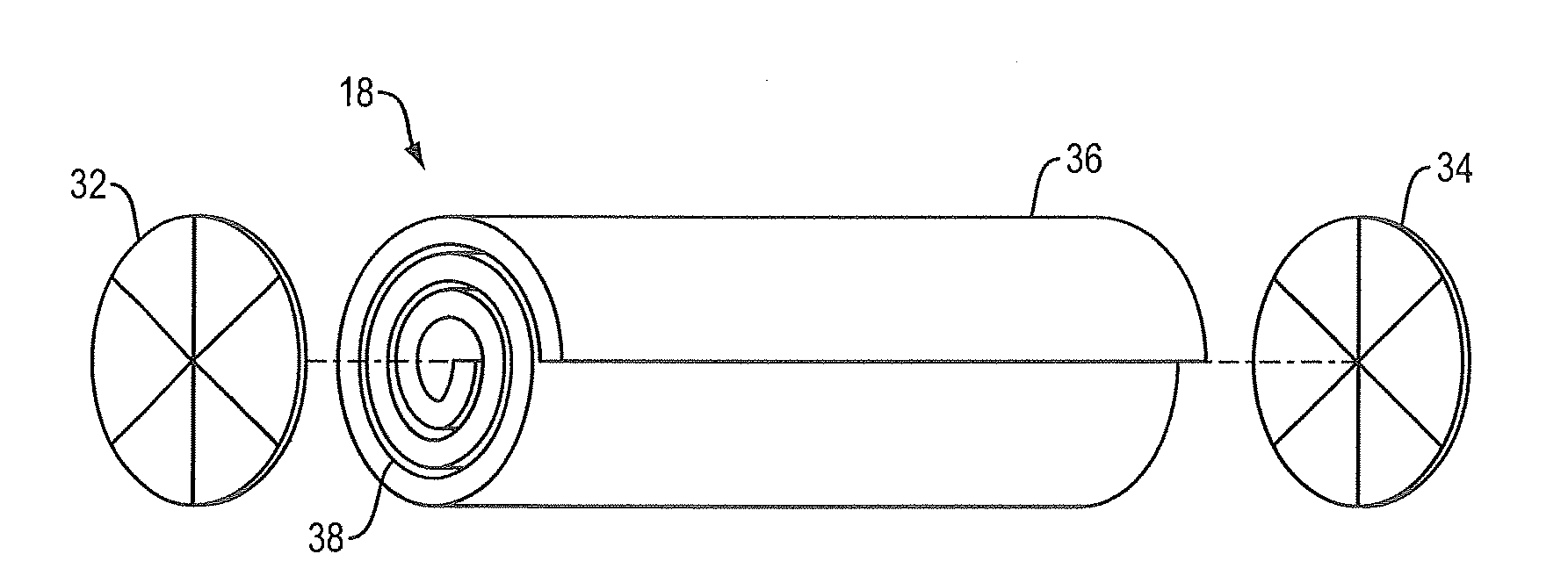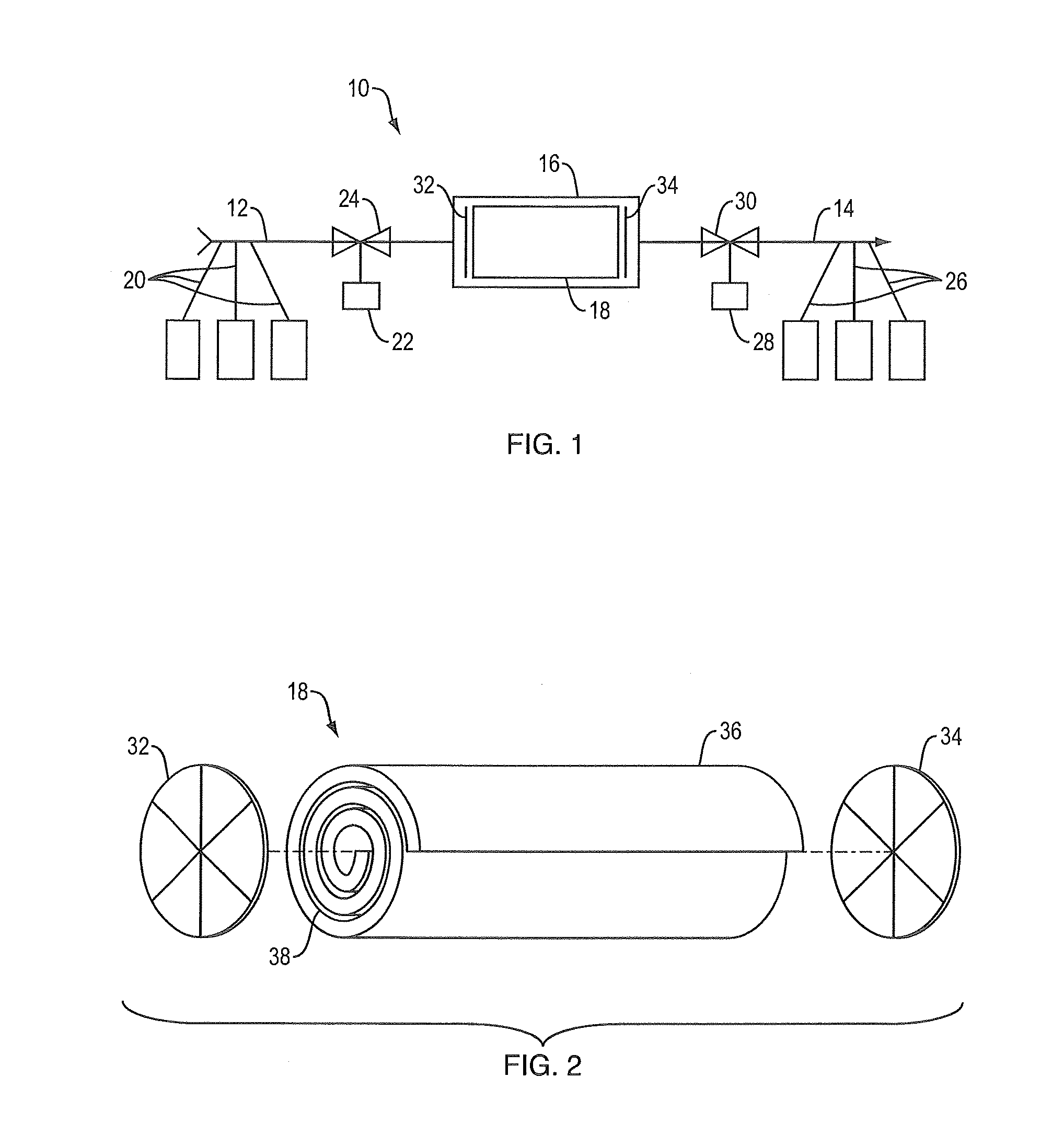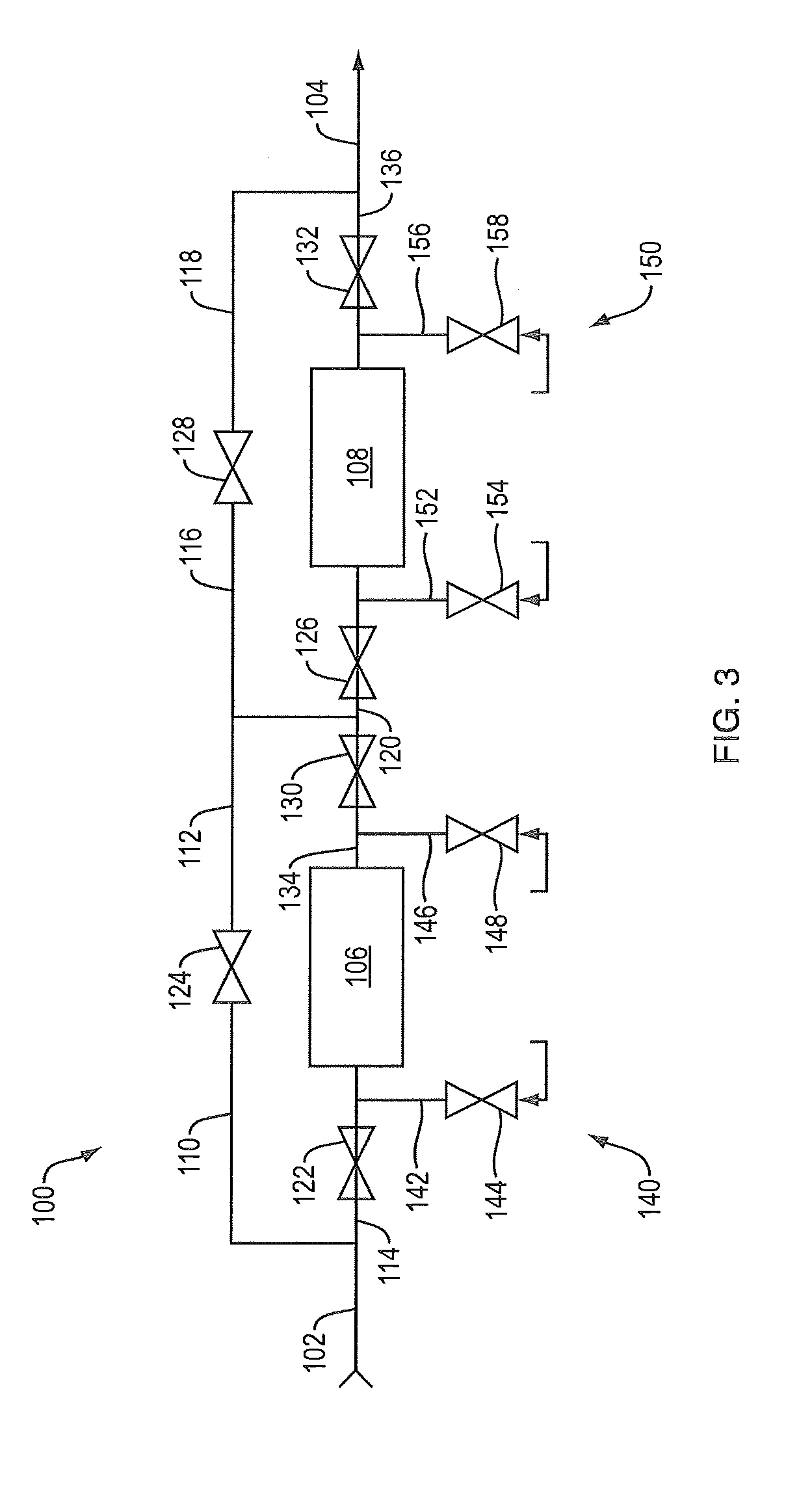System and method for film-based chromatographic separation
a chromatographic separation and film technology, applied in separation processes, ion-exchangers, membrane technology, etc., can solve the problems of difficult to remove them completely from the tank in a sufficiently effective manner, require precise bed packing methods and high levels of particle filtration, and limit the effect of carryover and concentration in the feed bath, so as to increase the fluid treatment capacity and ease of maintenance, and achieve effective process scale-up. , the effect of expanding the number of components
- Summary
- Abstract
- Description
- Claims
- Application Information
AI Technical Summary
Benefits of technology
Problems solved by technology
Method used
Image
Examples
Embodiment Construction
[0023]A first system 10 of the present invention suitable for treating a fluid in a chromatographic process is shown in FIG. 1. The system 10 includes an inlet conduit 12, an outlet conduit 14, a housing 16 and a spiral wound film element 18. The system 10 may include more than one such film element 18 in the housing 16. The inlet conduit 12 is fabricated of any material suitable to transport fluids of interest to the housing 16. One or more fluid delivery conduits 20 may be connected to the inlet conduit 12. Fluid flow into the inlet conduit 12 may be controlled by controller 22 and valve 24 that are coupled to the controller 22. A user may program the controller 22 to actuate the valve 24 to direct fluids from the delivery conduits 20 to the inlet conduit 12 as a function of the particular processing of the fluids and / or the spiral wound film element 18 in the housing 16.
[0024]Similarly, the outlet conduit 14 is fabricated of any material suitable to transport fluids of interest f...
PUM
| Property | Measurement | Unit |
|---|---|---|
| surface area | aaaaa | aaaaa |
| surface area | aaaaa | aaaaa |
| mechanical forces | aaaaa | aaaaa |
Abstract
Description
Claims
Application Information
 Login to View More
Login to View More - R&D
- Intellectual Property
- Life Sciences
- Materials
- Tech Scout
- Unparalleled Data Quality
- Higher Quality Content
- 60% Fewer Hallucinations
Browse by: Latest US Patents, China's latest patents, Technical Efficacy Thesaurus, Application Domain, Technology Topic, Popular Technical Reports.
© 2025 PatSnap. All rights reserved.Legal|Privacy policy|Modern Slavery Act Transparency Statement|Sitemap|About US| Contact US: help@patsnap.com



